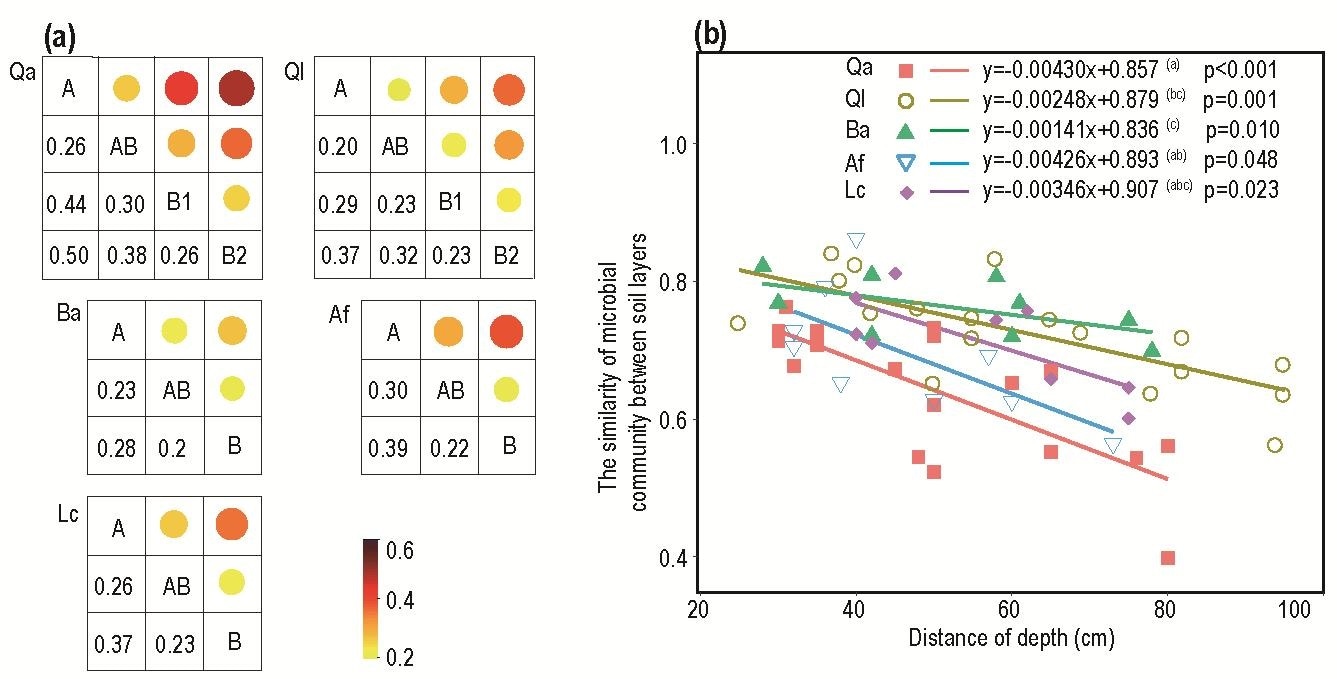Soil microorganisms play a significant part in biogeochemical and nutrient cycle processes, and they are vital components of the soil ecosystem. Soil microbial biomass, biodiversity, and structure vary dramatically between soil layers due to massive variations in soil characteristics across the soil profile.

Vertical variations in soil bacterial communities differed among forest types. Image Credit: Wuhan Botanical Garden
For anticipating belowground processes, the vertical pattern and variance in bacterial communities are crucial. The vertical variance in bacterial populations in natural forests, on the other hand, remains a mystery.
A research team led by Professor Feng Liu from the Wuhan Botanical Garden of the Chinese Academy of Sciences (CAS) presented a study in five forest types in the Taibai Mountain to examine the diversity and composition of soil bacterial population using 16S rRNA gene sequencing to determine the vertical pattern and difference in soil bacterial community in natural forests and demonstrate their influencing factors.
The variety and composition of soil bacteria were shown to be strongly altered by the soil layer, according to the researchers. The vertical distribution of soil microbial communities can be explained primarily by soil carbon supply and the oligotrophic-copiotrophic theory (copiotrophic taxa were enriched in surface soils with abundant resources, while oligotrophic taxa remained in deep layers with few resources).
The formation of soil bacterial communities within each soil profile was guided by deterministic processes pertaining to environmental heterogeneity.
In addition, there were differences in vertical variances in soil bacterial populations between forest types. The vertical spatial variation in soil bacterial composition was lower in the Betula albo-sinensis forest at medium elevation than that of other forests.
The increased vertical homogeneity in the B. albo-sinensis forest can be attributed to the higher mean annual precipitation and stony texture, which is likely owing to the greater vertical transit of soil microorganisms with water flux.
These findings highlight the significant relationship between climate conditions and vertical variation in soil bacterial populations, and they may be useful in predicting belowground functions.
Source:
Journal reference:
Tian, Q., et al. (2022) Vertical Distribution of Soil Bacterial Communities in Different Forest Types Along an Elevation Gradient. Microbial Ecology. doi.org/10.1007/s00248-021-01949-8.